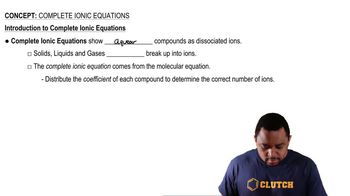Textbook Question
Chlorine monoxide (ClO) decomposes at room temperature
according to the reaction
2 ClO1g2¡Cl21g2 + O21g2
The concentration of ClO was monitored over time, and
three graphs were made:
What is the rate law for the reaction? (LO 14.9)
(a) Rate = k (b) Rate = k3ClO4
(c) Rate = k3ClO42 (d) Rate = k3ClO43
M14_MCMU6230_
382
views

![Graph showing concentration changes of reactants [X], [Y], and product [Z] over time in a chemical reaction.](https://lightcat-files.s3.amazonaws.com/problem_images/43642d15778f4d2c-1672153351677.jpg)



